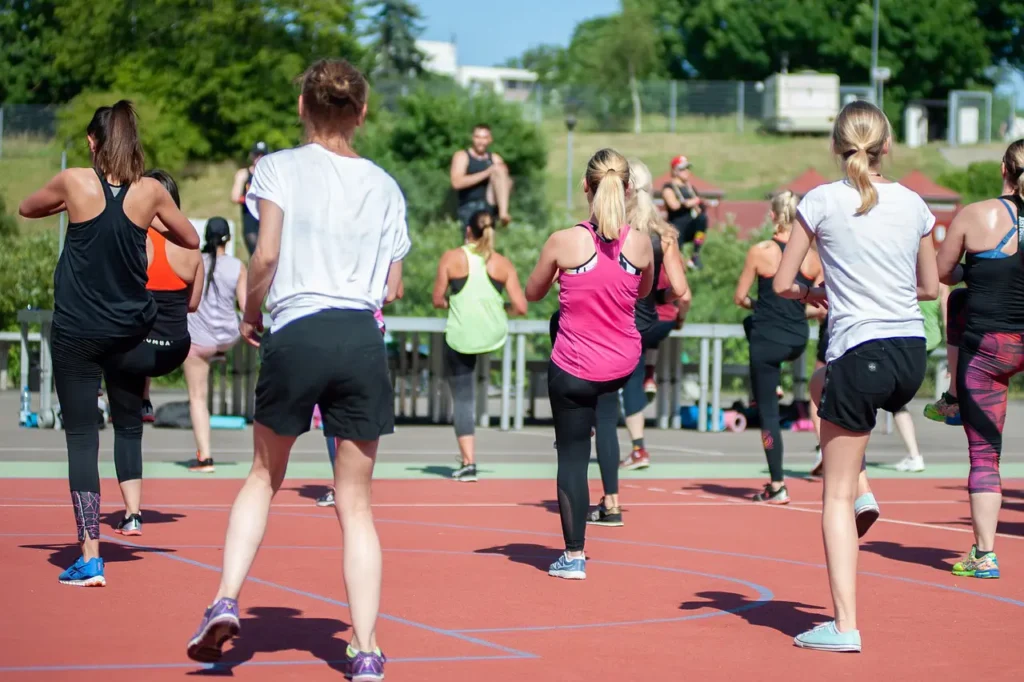Bewegung hilft gegen Schlafstörungen Studie zeigt: Intensive Bewegung hilft gegen Schlafstörungen Schlafstörungen sind in der Regel nur Symptome. Der größte Fehler ist daher zu versuchen,…

Study shows: Intensive exercise helps against sleep disorders
Sleep disorders are usually only symptoms. The biggest mistake is therefore to try to get them under control with medication from the outset, because, as with many other problems, this does not eliminate the cause. One cause, for example, can be a lack of exercise, especially in young people. A truism, you might think. But the focus here is on the word “intensive” in relation to exercise.
Study shows the connections
A study conducted in China(1), which observed the exercise behavior of students over seven days, wanted to find out how different types of physical activity affect the sleep quality of young adults. Exercise was divided into three categories:
- moderate to intensive physical activity,
- light physical activity and
- sedentary behavior.
The study involved 147 students (67 men and 80 women) aged between 18 and 29 from a university in Shenzhen, China. Prerequisites for participation were a regular sleep-wake cycle and normal physical functioning. Furthermore, they were not allowed to be undergoing psychotherapeutic treatment.
For 7 days and 8 nights, the students wore a wristband with an activity meter to record their movement data. They were not allowed to use any reminder functions, such as apps that prompt them to get up or move around. They were also asked to maintain their usual lifestyle. Sleep quality was recorded using questionnaires.
Result
The evaluation showed that 41 participants showed symptoms of insomnia, while 106 had no such complaints. No correlation between exercise and sleep quality was found in the students without sleep problems. However, the participants with sleep problems reported fewer sleep disturbances on days with more intensive physical activity. In contrast, their sleep worsened when they did more light physical activity or no physical activity at all.
“For young adults with insomnia symptoms, swapping light physical activity for moderate to vigorous exercise on a given day may improve sleep efficiency that night.”
concluded study leader Kaixin Liang.
The study provides valuable insights into the relationship between physical activity and sleep quality. However, the study did not take into account the specific activities carried out by the participants. It is possible that the effects observed in students with sleep problems are not only due to exercise, but also to the importance and context of the activities performed.
How do sleep disorders actually manifest themselves?
Sleep disorders can manifest themselves in different ways.
- Difficulty falling asleep, staying asleep or achieving restful sleep. Insomnia is one of the most common sleep disorders and is characterized by persistent problems falling asleep or staying asleep.
- Another serious disorder is sleep apnea, where breathing stops repeatedly during sleep, which poses long-term health risks.
- Restless legs syndrome, in turn, causes unpleasant sensations in the legs that make it difficult to relax and fall asleep.
Sleep problems are particularly widespread among young adults. It is estimated that around 33% of students in higher education suffered from sleep disorders during the 2020-2021 COVID-19 pandemic. A survey of Chinese students found that 40% of them slept less than seven hours a night. The main causes include stress, anxiety, irregular bedtimes and excessive screen use.
Gen Z and sleep disorders
According to recent studies(2), Gen Z is particularly affected. Burnout and depression combined with sleep disorders are on the rise here. Of course, the conclusion that they should simply exercise more would be too short-sighted. However, this generation’s extreme focus on digitalization has resulted in a frequent lack of exercise. According to a WHO survey(3) from 2022, it is mainly girls and young women who are affected by a lack of exercise.
In addition to digitalization, the behaviour of parents also has a strong influence on this. While in 2018, one in five children(4) was still taken to school by car (aka parent cab), according to a recent survey by the German automobile club ADAC, this figure is now one in four(5). When I was at school, you could count the number of children who were brought to school by car on one hand, even at grammar school.
Conclusion
Sleep disorders among young people are widespread and are certainly not primarily caused by a lack of exercise, but exercise, and intensive exercise at that, has a significant impact on sleep quality and, of course, general health. The world is increasingly paved with things that are supposed to make our lives easier, but which often come back as a boomerang in terms of health.
Politicians themselves do not see this problem when they demand unlimited “more digitalization”, so it must be the task of a new generation of parents to do this themselves for their children. Definitely a challenge that can cause sleepless nights for parents.
So the same applies to them: Movement … movement … movement!
To the topic matching articles
- Studie zeigt: Intensive Bewegung hilft gegen Schlafstörungen


